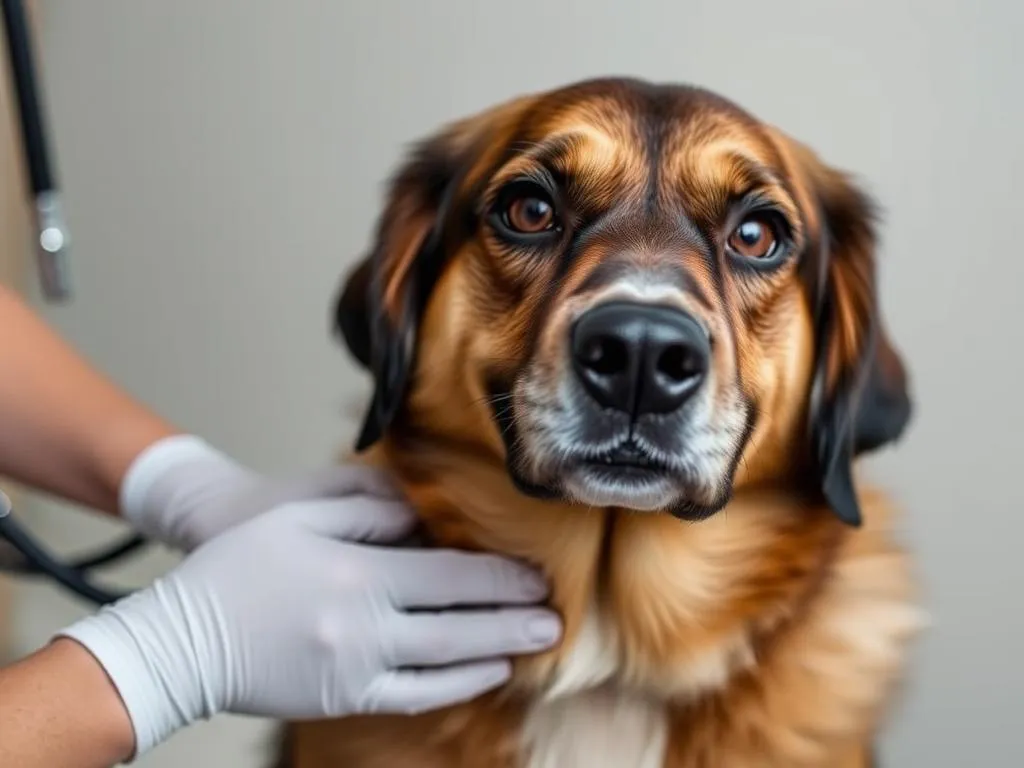
Introduction
High blood pressure in dogs, known medically as hypertension, is a condition that occurs when the force of blood against the walls of the arteries is consistently too high. While often overlooked, recognizing and addressing this condition early is crucial to maintaining your dog’s overall health. Untreated hypertension can lead to serious health complications, including damage to the heart, kidneys, eyes, and nervous system.
Veterinarians play a vital role in diagnosing and treating high blood pressure in dogs. This article aims to provide comprehensive insights into high blood pressure in dogs, answering common questions and concerns that pet owners may have. Understanding this condition can empower you to take proactive steps in your dog’s healthcare.
Understanding High Blood Pressure in Dogs
What is High Blood Pressure in Dogs?
High blood pressure in dogs refers to an increased pressure in the arteries, classified into two types: primary hypertension and secondary hypertension. Primary hypertension occurs without any identifiable underlying cause, while secondary hypertension is a result of other health issues, such as kidney disease or hormonal imbalances.
Causes of High Blood Pressure
Primary Hypertension
Genetic factors can contribute to primary hypertension, and certain breeds may be predisposed to developing this condition. Breeds like the Dachshund, Cocker Spaniel, and Boxer are among those more frequently affected.
Secondary Hypertension
Secondary hypertension is often associated with underlying health conditions, including:
- Kidney disease: Impaired kidney function can lead to fluid retention and increased blood pressure.
- Hormonal imbalances: Conditions like Cushing’s disease or hyperthyroidism can elevate blood pressure.
- Heart disease: Heart-related issues can also cause secondary hypertension.
Environmental Factors
Lifestyle and environmental factors can play a significant role in the development of hypertension in dogs. Stress, obesity, and lack of exercise can contribute to elevated blood pressure levels. It’s essential to monitor your dog’s environment and lifestyle to mitigate these risks.
Symptoms of High Blood Pressure in Dogs
The symptoms of high blood pressure in dogs can be subtle and may vary depending on the severity of the condition and any underlying health issues. Common signs to watch for include:
- Behavioral changes: Increased anxiety or restlessness.
- Vision problems: Sudden blindness or difficulty seeing.
- Nosebleeds: Frequent or unexplained nosebleeds can indicate hypertension.
- Lethargy: Unusual tiredness or decreased activity levels.
- Seizures: In severe cases, hypertension can lead to seizures.
If you notice these symptoms, it’s essential to consult your veterinarian for a thorough evaluation.
Diagnosis of High Blood Pressure
Veterinary Examination
Regular check-ups with your veterinarian are crucial in catching high blood pressure early. During a physical examination, your vet will observe your dog for any visible symptoms and may take a detailed medical history.
Diagnostic Tests
Blood Pressure Measurement
Blood pressure in dogs is measured using a non-invasive method, typically involving a cuff placed around the dog’s leg or tail. This procedure is similar to how blood pressure is measured in humans. If high blood pressure is detected, further tests may be necessary to identify any underlying conditions.
Additional Tests
To get a comprehensive understanding of your dog’s health, your veterinarian may recommend additional diagnostic tests, such as:
- Blood tests: To check for kidney function and hormone levels.
- Urine tests: To assess kidney health and detect abnormalities.
- Imaging studies: X-rays or ultrasounds may be used to examine the heart and other internal organs for any issues.
Treatment Options
Lifestyle Changes
Making lifestyle adjustments is often the first step in treating high blood pressure in dogs. Recommended dietary changes include:
- Low-sodium diet: Reducing sodium intake can help lower blood pressure.
- High-fiber foods: Incorporating fiber-rich foods can support overall health.
Regular exercise is also essential. Maintaining a healthy weight through consistent activity can prevent and manage hypertension in dogs.
Medications
When lifestyle changes aren’t enough, your veterinarian may prescribe medications to help control your dog’s blood pressure. Common medications include:
- ACE inhibitors: Help relax blood vessels and lower blood pressure.
- Beta-blockers: Reduce heart rate and help manage blood pressure.
- Diuretics: Help eliminate excess fluid, reducing blood volume and pressure.
Always discuss potential side effects and considerations with your veterinarian before starting any medication.
Monitoring and Follow-Up Care
Ongoing monitoring of your dog’s blood pressure is crucial. Your veterinarian will recommend follow-up visits to track your dog’s progress and make necessary adjustments to treatment. Regular check-ups can help ensure your dog remains healthy and any issues are addressed promptly.
Prevention of High Blood Pressure
Regular Veterinary Check-Ups
Proactive health screenings are vital in preventing high blood pressure. Regular check-ups with your veterinarian can help identify risk factors early, allowing for timely intervention.
Healthy Diet and Weight Management
Feeding your dog a balanced, nutritious diet can significantly impact their overall health. Consider the following recommendations for maintaining a healthy weight:
- Portion control: Measure your dog’s food to avoid overfeeding.
- Healthy treats: Opt for low-calorie snacks and fruits like carrots or apple slices.
- Avoid table scraps: Human food can be high in salt and calories, contributing to weight gain.
Stress Reduction Techniques
Reducing stress in your dog’s environment can help prevent high blood pressure. Consider these strategies:
- Create a calm space: Provide a quiet area where your dog can retreat when they feel anxious.
- Consistent routine: Maintain a regular schedule for feeding, walks, and playtime.
- Positive reinforcement training: Helps build your dog’s confidence and reduces anxiety.
Frequently Asked Questions (FAQs)
What breeds are most at risk?
Certain breeds, including Dachshunds, Cocker Spaniels, and Boxers, are more predisposed to developing high blood pressure.
How is high blood pressure different from other health issues?
High blood pressure is a specific condition characterized by elevated blood pressure levels, while other health issues may have different symptoms or causes, such as heart disease or hormonal imbalances.
Can high blood pressure be cured or just managed?
While some cases of secondary hypertension can be resolved by treating the underlying condition, primary hypertension often requires ongoing management through lifestyle changes and medication.
What should I do if I suspect my dog has high blood pressure?
If you suspect your dog has high blood pressure, consult your veterinarian immediately for a thorough examination and appropriate testing.
Conclusion
High blood pressure in dogs is a serious condition that requires attention and care. Recognizing the symptoms, understanding the diagnostic process, and knowing the treatment options available can help you effectively manage your dog’s health. Regular veterinary visits and proactive lifestyle choices play a critical role in preventing and managing hypertension.
As a pet owner, it’s essential to remain vigilant about your dog’s health and consult your veterinarian if you have any concerns. Early diagnosis and treatment can significantly improve your dog’s quality of life and prevent serious complications.









